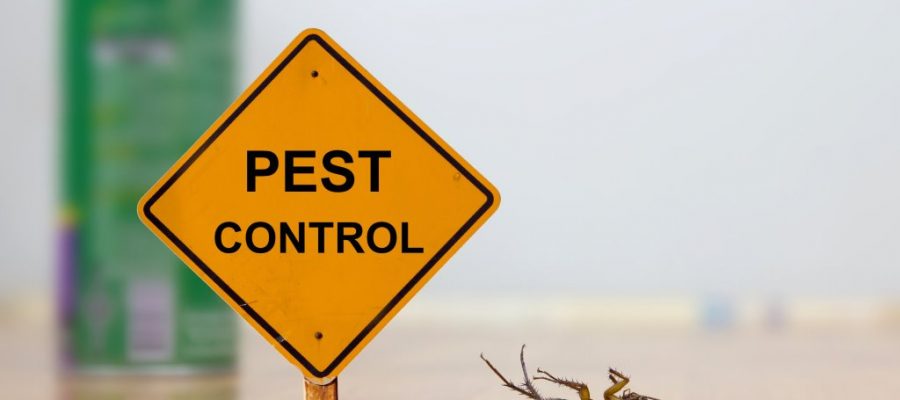Exploring Problem and Treatment Strategies on the planet of Bug Control
The landscape of insect control encompasses a myriad of challenges, specifically as problems of typical household bugs remain to advance. Comprehending the behaviors and reproductive patterns of these annoyances is essential for developing efficient treatment methods. By integrating preventative steps with innovative management methods, such as Integrated Pest Administration (IPM), homeowners can much better safeguard their atmospheres. Nonetheless, the effectiveness of these approaches might differ considerably based upon specific scenarios. What underlying aspects add to the success or failure of these methods in various setups?

Usual Household Pests
When it concerns handling our living spaces, understanding typical family pests is critical. These pests not only disrupt our comfort but can also position health and wellness dangers and damage residential property. One of the most widespread house pests include ants, roaches, rats, termites, and bed pests.
Ants, usually seen foraging in cooking areas, can pollute food and establish huge nests. Rats, consisting of mice and rats, can create architectural damage and lug illness like hantavirus and salmonella.
Recognizing the indicators of these insects, such as droppings, nests, or attack marks, is crucial for early intervention (Pest Control Lockhart). Proper hygiene techniques, sealing entrance factors, and maintaining a clutter-free environment are effective preventative actions. By determining these usual family pests and recognizing their behaviors, house owners can take positive actions to reduce problems, guaranteeing a much healthier living environment
Recognizing Pest Infestations
Bug infestations can intensify promptly, turning a small annoyance into a substantial problem otherwise addressed quickly. Understanding the nature of these invasions is crucial for efficient monitoring. Pests can get into household and commercial spaces for numerous factors, consisting of the search for food, sanctuary, or reproducing premises. Common elements adding to problems consist of poor sanitation, structural susceptabilities, and seasonal adjustments that drive pests indoors.
Identifying the sort of pest is important, as different species exhibit varied behaviors and reproductive prices. Rodents may develop nests in surprise locations while pests like roaches prosper in moist atmospheres. Early detection frequently hinges on recognizing indicators such as droppings, munch marks, or uncommon audios, which can show an issue before it becomes extreme.
Warm, moist climates can assist in the quick growth of parasite populations, while modifications in landscape design or building can accidentally create favorable settings. An informed approach to comprehending these characteristics lays the groundwork for efficient parasite management techniques in the future.
Therapy Approaches and Techniques
Effective treatment techniques and strategies are essential for alleviating parasite problems and restoring a risk-free atmosphere. A diverse method is usually best, incorporating chemical, biological, and mechanical techniques tailored to the certain parasite and the extent of the infestation.
Chemical treatments include the use of insecticides and herbicides, which can successfully remove parasites. Nonetheless, correct application and adherence to safety guidelines are crucial to reduce threats to human beings and non-target microorganisms. Integrated Insect Administration (IPM) urges the judicious use of chemicals as a last option, relying rather on surveillance and limit degrees to establish treatment requirements.
Organic control techniques involve presenting natural killers or parasites to reduce parasite populaces. This approach is significantly prominent, particularly in farming settings, as it advertises environmental sustainability.
Mechanical techniques, such as traps and obstacles, provide prompt relief from parasites without introducing chemicals. Alternatives include sticky catches for insects or physical barriers for rats.
Ultimately, the selection of treatment approach ought to take into consideration the particular parasite, the atmosphere, and potential influence on human wellness and communities. A well balanced combination of these methods can effectively handle infestations while promoting lasting pest control options.
Preventative Steps for Residence
Proactively addressing bug concerns before they intensify is essential for keeping a healthy and balanced home environment (Pest Control Lockhart). Executing reliable safety nets can substantially lower the likelihood of invasions, eventually safeguarding both your home and well-being

Correct landscape design additionally plays a critical function in avoidance. Maintaining hedges and trees cut away from your home minimizes the opportunities of bugs discovering their method inside your home. Moreover, guarantee that drainage systems are functioning successfully to stop standing hop over to here water, which can pull in insects and other insects.
Last but not least, regular evaluations are recommended. Routinely looking for signs of insect activity permits early intervention. By taking on these safety nets, homeowners can develop an atmosphere that is less welcoming to pests, consequently improving their overall top quality of life and lowering the requirement for comprehensive pest control treatments.
Commercial Parasite Control Methods
A comprehensive strategy to industrial parasite control is vital for companies intending to maintain a secure and hygienic atmosphere. Effective methods involve a combination of normal assessments, employee training, and the application of Integrated Pest Administration (IPM) techniques.
Regular assessments enable early discovery of pest activity, enabling prompt treatment. Companies must create a routine schedule for these analyses, concentrating on high-risk areas such as cooking areas, storeroom, and garbage disposal websites. Employee training is similarly critical; staff ought to be informed on the indicators of parasite infestations and the significance of reporting them promptly.
Implementing IPM practices assists alleviate parasite concerns sustainably. This consists of habitat modification, why not look here such as sealing entry points and minimizing mess, along with using all-natural deterrents prior to considering chemical therapies.

Moreover, collaborating with a certified pest control copyright makes certain accessibility to specialist expertise and innovative therapy alternatives. This collaboration can bring about customized bug control plans tailored to the particular requirements of the organization, decreasing threats and boosting general efficiency. Inevitably, an aggressive and educated technique promotes a pest-free environment, safeguarding both public wellness and organization online reputation.
Final Thought
In final thought, efficient insect control requires a comprehensive understanding of common home pests and their actions, combined with targeted therapy approaches. Applying preventative procedures along with therapy methods such as Integrated Pest Management and organic control improves the capability to reduce infestations.